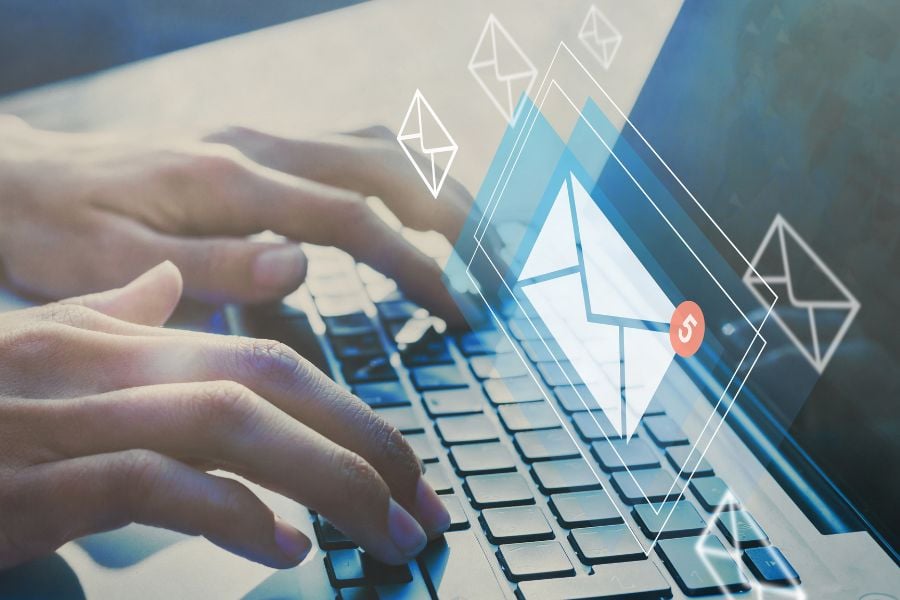Ever wondered how to measure brand awareness in today’s digital landscape?
If you’re nodding your head, you’re not alone, my friend.
Everyone’s after that secret sauce. That magic brand awareness metric that gauges the impact and reach of your brand name.
Good news: there’s a way out.
Because, dear reader, you deserve clarity amidst this digital cacophony.
And we’re here to deliver that.
In this blog post, we’ll delve into the art and science of measuring brand awareness using 10 genuine tactics.
Together, we’ll navigate this labyrinth, dispelling the smoke and mirrors that have confounded you
Shall we?

What is Brand Awareness (& Why Measure It)?
Ever caught yourself humming a jingle without realizing where it came from? That’s the power of brand awareness.
Brand awareness is a broad term that refers to how familiar consumers are with a brand or its products.
Simply put, brand awareness measures how memorable and recognizable a brand is to its target audience.
So, why is measuring brand awareness crucial? Well, it’s simple:
- Awareness Equals Recognition: Brand recognition makes people more likely to choose your business.
- Brand Equity: Higher brand awareness often increases brand loyalty and trustworthiness.
- Informed Marketing Efforts: Knowing your brand’s position helps you improve content marketing campaigns.
- Potential Customer Insights: Knowing how your brand resonates helps attract and keep customers.
Sounds beneficial, doesn’t it? But, the tricky part is…
How exactly do you get a handle on this?
Buckle up because we’re diving deep into strategies to measure brand awareness.
8 Top Strategies That’ll Help Measure Your Brand Awareness

Ready for the main event?
Some tried-and-true tactics to gauge that elusive brand presence are:
1. Measure Social Listening
Social media platforms like Twitter, Facebook, and Instagram are not entertaining distractions.
They’re robust channels where consumers share their feelings about brands.
Your brand’s impact is shown in every mention, comment, and share.
Imagine launching an eco-friendly product and concurrently initiating a brand awareness campaign on Instagram.
By observing brand dialogue, you can collect data and understand related emotions.
Are users ecstatic about sustainable materials? Are they sharing suggestions for the next product release?
Tools like Sprout Social allow you to listen, engage, get feedback, and build brand loyalty.
2. Check Surveys & Consumer Feedback
Ever heard the adage, “Just ask”?
Sometimes, directness of human feedback remains unbeatable.
You can get feedback from your audience through platforms like Google Forms and SurveyMonkey.
For instance, if you’re going bold with a new packaging design, why not let your customers weigh in?
If your customers are drawn to its aesthetics or your brand’s values, a simple survey can reveal that.
And to encourage feedback, you can offer discount codes or sneak peeks into upcoming releases.
The brilliance of this method? It gauges your brand awareness effort and pinpoints precise areas for innovation.
3. Analyze Website Traffic & User Behavior

Your website is the digital space where visitors experience your brand.
And each click and page view reveals how they see you.
Let’s say traffic, shares, and engagement surge after writing a blog post about your brand’s ethics.
This is not just about brand exposure.
It shows the brand’s influence.
It shows the ability to spark genuine conversations.
It shows a chorus of approval from the audience, indicating these values resonate.
The narrative can further be refined by tools like Google Analytics.
By using the tool to understand user groups, say by geography or device, you can continually optimize each experience.
Why?
Well, once you grasp your audience’s attention, you’re poised to captivate their loyalty.
4. Consider Brand Search Volume
It’s flattering when someone remembers your name, especially online. Tools like Google Trends offer an intriguing perspective on this.
You can learn a lot by tracking how often people search for your brand.
Jumping back to our eco-friendly example…
After an eco-awareness campaign, Google Trends may show a surge in queries for your brand.
That’s not a coincidence. It’s a collective nod from searchers seeking your brand’s sustainability.
Such insights from Google Trends enable you to tailor future content to your audience’s needs. Thus, you stay ahead in brand recognition.
5. Explore Social Media Engagement & Followers
While having many social media followers is thrilling, engagement is what matters the most.
Each comment, share, or heart reaction is a tale of someone connecting with your brand’s narrative.
Say, you release a behind-the-scenes video of your brand’s journey.
The response?
An overwhelming flood of shares, comments, and perhaps a few tear-eyed emojis.
It’s proof of your brand story’s genuine connections, not just digital appreciation.
But, navigating each platform requires finesse.
A brand awareness strategy that wins hearts on Instagram might need tweaking for TikTok.
Thus, it’s essential to be fluid, always ready to adapt, and meet your audience where they thrive.
6. Track Email Open & Click-Through Rates

Email marketing is the classic, enduring instrument in the dynamic digital marketing world.
But it’s not simply about sending emails; it’s about understanding what captivates your reader’s attention.
Consider the exhilaration of unveiling a new product line.
An email campaign announcing this and a behind-the-scenes look could pique curiosity.
If recipients open these emails and further engage with embedded links, it’s a nod to captivating content and further enhances your brand awareness.
On the other hand, if the opposite is true and you experience a drop off in email open and click-through rates, then you need to consider your digital marketing strategy.
Employing email platforms like Mailchimp can offer valuable insights into engagement metrics. It also aids in refining and personalizing future campaigns, creating a bespoke experience for every reader.
7. Survey Your Online Reputation & Reviews
In a world where people share opinions instantly, consumer narratives shape the reputation of your brand.
Every review, shoutout, or critique adds a stitch to this fabric.
Imagine launching a pop-up store in a new city. As the first customers share their experiences online, digital platforms like TripAdvisor mirror your brand’s impact.
But these platforms are more than reflection points. They’re springboards for growth.
Positive reviews amplify trust, while constructive feedback provides invaluable roadmaps for enhancement.
Employing tools like Google Alert, brands can take part in these narratives. They can acknowledge praise, address concerns, and ensure their reputation evolves and grows.
8. Inspect Brand Mentions
The digital landscape is buzzing with conversations. Amidst that hum, mentions of your brand amplify your narrative.
Whether it’s from a passionate blogger or a news outlet, every shoutout counts.
Consider a situation where a popular online magazine features your sustainable practices.
That’s not only a moment of pride; it’s an invitation to a broader audience to resonate with your brand’s ethos.
By harnessing tools like Sprout Social and Google Alert, you can tune into this awareness.
9. Evaluate Referral Traffic

Referral traffic informs you about the various external sources leading users to your brand’s website.
This isn’t just a fascinating display of numbers; it’s the very pulse of your brand’s reach and influence in the digital world.
Imagine you’ve initiated a collaborative venture with another brand, each spotlighting the other on their platforms.
When the referrals start pouring in, it’s an intriguing tale of your brand’s magnetic appeal, pulling in audiences from diverse digital locales.
You can meticulously track these referrals using Google Analytics, observing the streams of curious minds trickling in from different sites.
Recognizing this illuminates the paths through which audiences discover you and guides future strategic decisions.
10. Unravel Influencer Collaborations
When an influencer with aligned values and audience fuses their narratives with yours, it creates authentic interactions and engagements.
Each influencer post amplifies your brand’s awareness, drawing their followers into your brand’s story.
Tools like Traackr can offer valuable insights into each collaboration.
Plus, it allows you to measure key brand awareness metrics like reach and engagement and adjust your influencer marketing strategy accordingly.
Unlocking the Secrets of How to Measure Brand Awareness
Remember when you first asked yourself how to measure brand awareness?
The journey’s been an eye-opener, right?
But knowledge without action? That’s like a sports car with no gas.
So, rev up those engines and drive your brand name to unimaginable heights.
The tools are in your hands.
Why wait?



